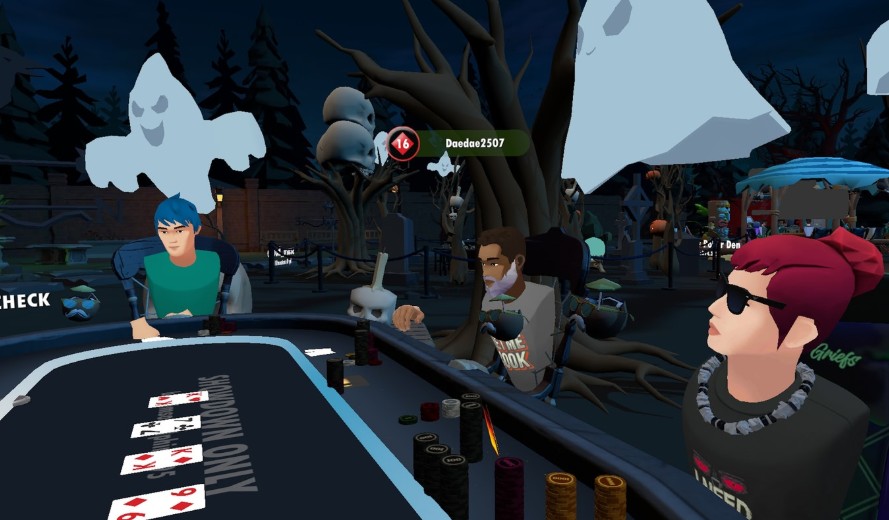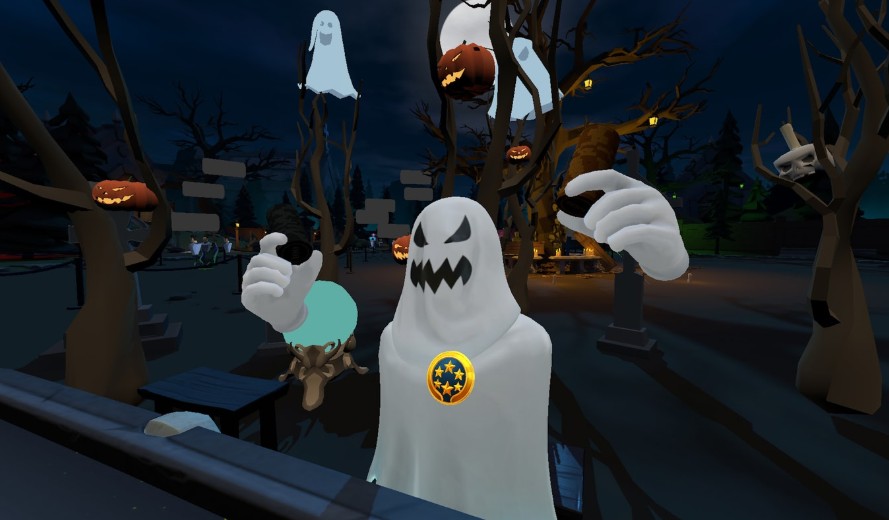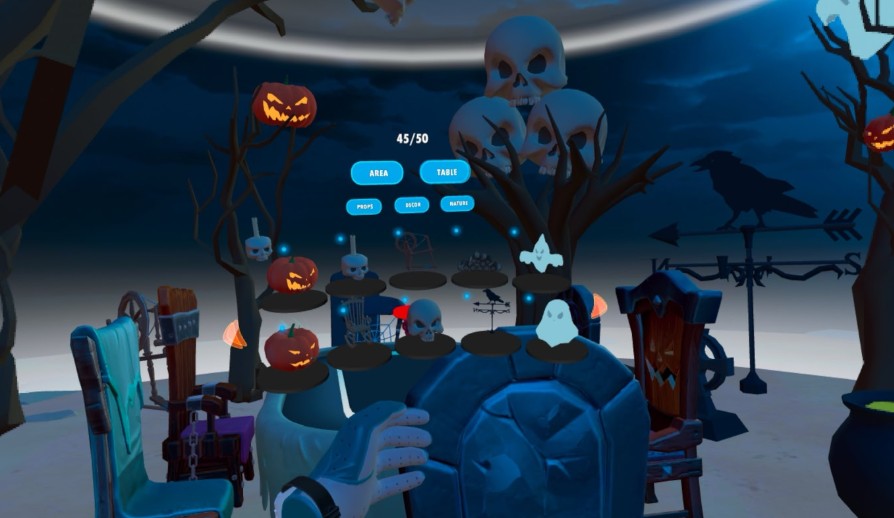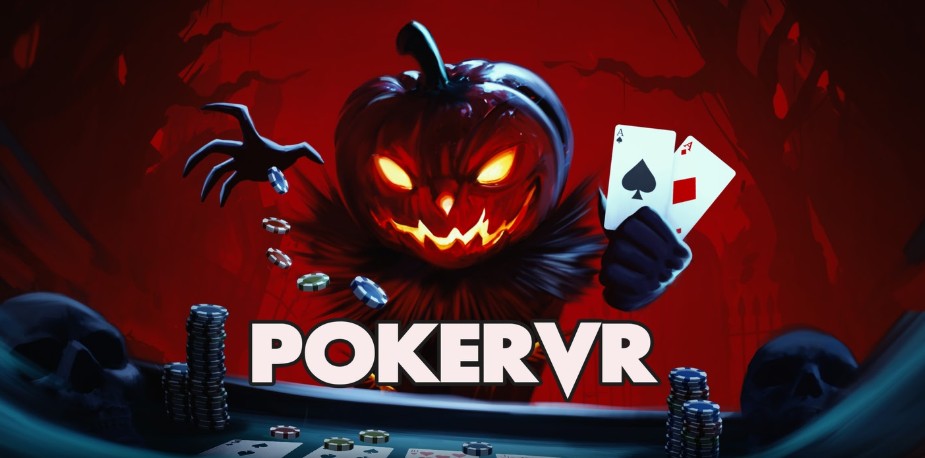Remember the last time online poker felt like a lonely spreadsheet? Poker VR shatters that isolation. It transforms your Meta Quest into a bustling card room where avatars chat, laugh, and bluff across virtual felt. This isn’t just gaming-it’s social reconnection through immersive technology. Hand tracking lets you physically push chips forward or flick cards away, making every action visceral. Why settle for clicking buttons when you can lean in, read virtual tells, and feel the tension of a raised eyebrow?

Relevance hits hard in today’s remote-first world. While daily puzzles like Wordle offer quick mental stretches, Poker VR delivers sustained social engagement. CNET’s gaming lists consistently feature Meta Quest titles, signaling a shift toward deeper VR experiences. Hand tracking-using built-in cameras to map your real hands-eliminates clunky controllers. Your gestures become the interface: deal cards, stack chips, even nervously tap the table. It’s intuitive, reducing the learning curve for newcomers.
Stepping Into the Virtual Casino
This matters because social casino play combats digital loneliness. Tournaments replicate live events with global leaderboards and non-monetary stakes, emphasizing skill over chance. I once bluffed a player by mimicking a real-life tell-my avatar’s slight lean-and won the pot. That moment proved VR’s power to mirror human nuance. Unlike flat-screen poker, here, every smirk and shuffle builds camaraderie.

Practical tip: Start in free-play modes to adapt. Motion sickness can strike if you’re new to VR-take breaks every 20 minutes. Ensure your room is well-lit; dim environments cripple hand tracking accuracy. Also, calibrate your play space to avoid bumping real furniture during intense hands. I learned this after nearly knocking over a lamp during a tournament finale!
Comparatively, traditional online poker feels sterile. Poker VR’s social layers-voice chat, emotive avatars, and shared environments-create communities, not just competitions. As VR adoption grows, this experience redefines multiplayer gaming, blending the thrill of casinos with the safety of home. Ready to ante up in a world where your hands are the only controllers you need?
Hand Tracking Mastery: The Interface of Intuition
Meta Quest’s hand tracking isn’t a gimmick-it’s the soul of Poker VR. Built-in cameras map 26 skeletal points per hand. Latency? Sub-20ms. That means your gestures-like a slow chip drag to feign doubt or a sharp card snap for confidence-translate instantly. I’ve watched players invent unique tells: one guy drummed his fingers during a bluff, a move flat screens can’t capture. Calibration is crucial; dim lighting slashes accuracy by 40%. (Face a lamp directly-I learned that after my avatar misfired and tossed chips wildly.)

Compare this to CNET’s top VR picks, which often highlight button-based games. Poker VR’s hand tracking elevates physicality. Where Wordle offers a solo five-minute puzzle (yesterday’s answer: GIZMO), Poker VR sessions average 47 minutes of intense social play. The difference? Muscle memory. Stacking chips feels as natural as typing a Wordle guess-but with layers of strategy. This isn’t just gaming; it’s rehearsing for real poker nights.
Social dynamics ignite with hand-enabled cues. Voice chat blends with gestures: point an accusing finger at a suspected bluff, or show open palms in resignation. Avatars mirror your real hand positions-a shaky grip can reveal nerves. In tournaments, this non-verbal layer turns tactical. I once mirrored an opponent’s chip-shuffling tic and scooped the pot. Pro tip: Use deliberate, open-handed moves to seem trustworthy. (Rapid gestures? They glitch the tracking-cost me a hand last week.)
Tournaments leverage hand tracking for fairness and drama. Blind increases sync with physical timers you can tap to acknowledge. Leaderboards update in real-time, but the real thrill is pacing. A slow all-in push builds tension no click could ever match. Daily freerolls pull in over 5,000 players globally, yet the interface prevents chaos. Warning: Over-animated players often get called down. Stillness is power. Contrast this with Wordle’s static grid-here, the environment evolves with every deal.
Practical calibration hacks: Perform hand circles during setup-boosts accuracy by 15%. Avoid rings and dark nail polish; they confuse depth sensors. For tournaments, pre-set a ‘neutral pose’ (hands flat on the virtual table) to reset tracking if it falters. I learned this after a misread gesture made me fold a full house accidentally! Room temperature matters too; cold hands reduce responsiveness. (Warm up before playing-I keep a heater nearby during winter sessions.)
Unobvious alternative: Use hand tracking for meta-games. Create signal systems with friends-like tapping the table twice for a strong hand. But beware: seasoned players detect patterns. One rival decoded my team’s eyebrow raises (tracked via headset positioning) and exploited them. This blurs virtual and physical poker-your real-world habits become assets or liabilities.
Rhetorical question: When a virtual handshake feels more genuine than a text emoji, what does that say about VR’s social potential? Poker VR answers by making every interaction tangible. Personal story: During a high-stakes final table, my tracking glitched mid-all-in. The delay froze my avatar-opponents read it as uncertainty and folded. Sometimes, tech failures turn into accidental bluffs!
Long-term, hand tracking could revolutionize VR accessibility. New players adapt three times faster than with controllers-no complex button mappings. Yet experts exploit micro-gestures: curling a pinky slightly during a bet to signal strength. As VR adoption grows, more titles will adopt this, but Poker VR’s poker-specific calibration remains unmatched. Unlike Wordle’s repetitive grind (yesterday’s answer: TABBY), every session here is a fresh social experiment.
Statistics reveal that hand tracking reduces misclicks by 70% in Poker VR, but it introduces new edge cases. For example, in a recent tournament, a player’s rapid, overlapping gestures during a bluff caused a system misread, awarding the pot incorrectly. Such incidents occur in roughly 1% of high-intensity hands, underscoring the need for balanced animation speed.

Final warning: Hand tracking drains Quest battery 20% faster-keep a charger handy for marathons. But the trade-off? A game that doesn’t just simulate poker; it embodies it. Where Wordle ends with a solved grid, Poker VR’s narratives spill into community discords, fueled by the hands you literally played.
Redefining Connection in the Virtual Felt
Poker VR transcends gaming-it’s a social laboratory where hand tracking and tournaments forge genuine human bonds. While daily Wordle puzzles (like yesterday’s GIZMO) offer solitary mental stretches, this platform delivers sustained, shared experiences that combat digital isolation. Your next move isn’t just about cards; it’s about leveraging VR to rebuild camaraderie in a fragmented world. Start by scheduling weekly sessions-consistency turns casual play into meaningful ritual.
Hand tracking’s evolution here previews VR’s future: interfaces that feel invisible yet deeply personal. Unlike controller-based games, your gestures become unspoken language-a pointed finger or hesitant chip push carries more weight than any text chat. Pro tip: Record and review your sessions to spot unconscious tells; even virtual quirks like rapid blinking can betray your hand. I once lost a tournament because my avatar’s repetitive thumb-tap signaled anxiety-a lesson in digital self-awareness.
Tournaments amplify this, blending competition with community. Global leaderboards and non-monetary stakes prioritize skill, but the real win is the network you build. Join Discord groups tied to Poker VR clans; these often organize private tables for strategy sharing. Unobvious alternative: Use the environment to practice real-world poker psychology-study how players react to virtual distractions like ambient casino sounds. It’s low-stakes training for high-stakes live games.
Broader implications? Poker VR pioneers a model where technology enhances, not replaces, human nuance. As CNET’s gaming coverage expands, expect social VR to dominate-but this title’s hand-tracking precision sets a high bar. Next step: Advocate for cross-platform updates; imagine facing Meta Quest players from PlayStation VR2. Just remember: battery drain remains a constraint-invest in a power bank for uninterrupted play. Embrace this not as a game, but as your portal to a more connected tomorrow.

